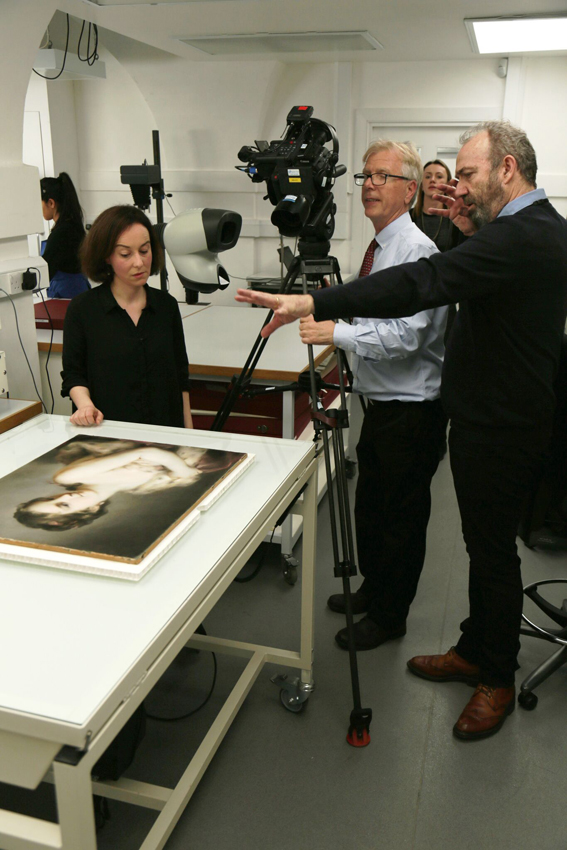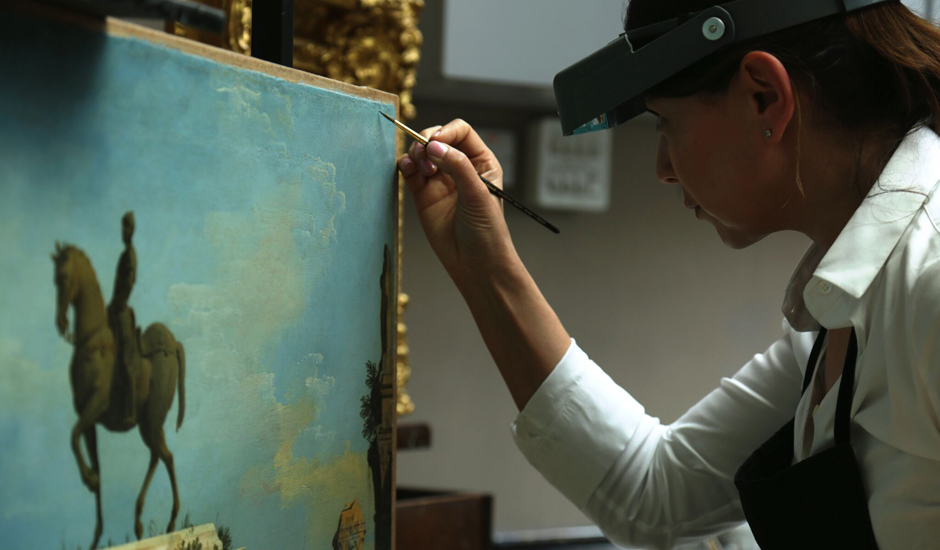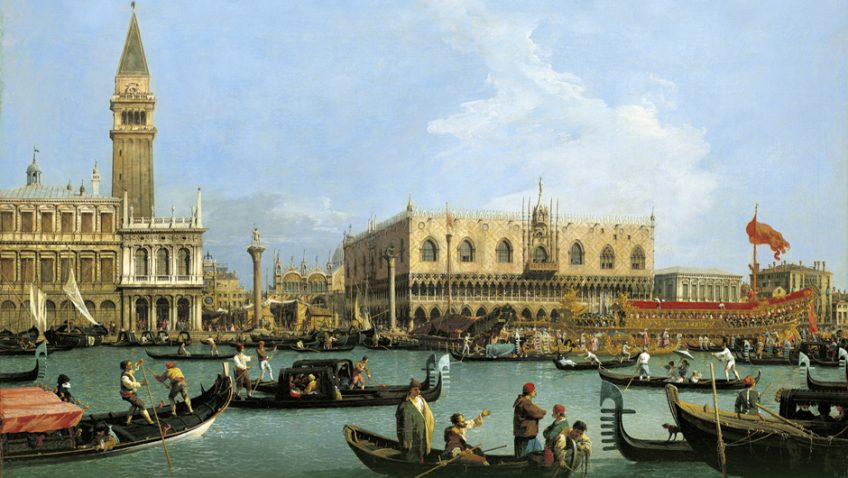Joyce Glasser reviews Exhibition on Screen: Canaletto and the Art of Venice (Cert U) 87 min.
Everyman, Curzon, VUE chains (26th Sept); Picturehouse (2nd Oct). Check the website www.exhibitiononscreen.com for more and local details.
A perfect day out in London must include a visit to the Queen’s Gallery’s beautiful and skilfully-curated exhibition Canaletto and the Art of Venice, followed by Seventh Arts’ informative, comprehensive and frequently fascinating film version of the exhibition. But if you cannot make it to London, the documentary is a satisfying stand-alone alternative. Unlike most exhibitions about Venice’s famous son, this one and the documentary, sets Giovanni Canal’s (1697-1768) magnificent cityscapes in the context of his powerful city and of his fellow artists.
Venice, of course, is the main character in this story as Canaletto might have remained a designer and painter of theatre and opera sets, like his esteemed father, if he had lived in a less popular tourist destination. In 1719-20 the apprentice went to Rome with his father for work. Inspired by the buildings and ruins he saw, Canal junior, dubbed Canaletto, decided to draw and paint them. His singular talent was instantly recognised.
 Today, the city has very mixed feelings about the impact of cruise ships and cheap flights on its fragile infrastructure, but in the early 18th century, Venice was the destination de rigueur of any English gentleman. And one man in particular welcomed these gentlemen to Venice with open arms.
Today, the city has very mixed feelings about the impact of cruise ships and cheap flights on its fragile infrastructure, but in the early 18th century, Venice was the destination de rigueur of any English gentleman. And one man in particular welcomed these gentlemen to Venice with open arms.
That man is Joseph Smith (1682-1770), a British entrepreneur who spent his life in Venice, with a Palazzo on the canal and a villa on the mainland for the bulk of his art collection. Art collector/patron/dealer/publisher, import/export merchant – and, later, British Consul, Smith had his pulse on the city, even marrying soprano Catherine Tofts, London’s first ‘prima donna’ who arrived in Venice in 1711. The couple were at the centre of the city’s thriving opera scene that included no fewer than 19 opera companies.
Smith was not only Canaletto’s lifelong agent and dealer, but cornered the market in British tourists, hanging Canaletto’s enticing paintings in his Palazzo on the Grand Canal and taking orders for souvenir copies. If the Queen is now the proud owner of arguably the largest and finest collection of Canaletto’s in the world, it is thanks to Smith on two counts.
First, Smith recognised the young vedutista’s visual intelligence and the superior quality of his draftsmanship and made a market of his work to the detriment of his rivals. Chief among these was Francesco Guardi, whose more downbeat views of the crumbling, decadent city proved prophetic, in line with Napoleon’s assessment, over 50 years later, that Venice had become ‘a drawing room of Europe peopled with casinos, carnivals, and courtesans for hire.’
Second, because in 1762, Smith’s entire vast collection of art and illustrated books and manuscripts (Smith opened his own publishing house) was purchased by King George III for the sum of £20,000. A controversial amount at the time, after seeing this film, it will strike you as the deal of the century.
Canaletto has defined the image of Venice to the British public to such an extent that it’s easy to overlook the fact that he was working in a larger cultural sphere where history and religious paintings were the two best sellers, with portraits also popular. The film provides a tour of the largest gallery exploring these genres and the painters who knew Canaletto, including the religious painters Sebastiano Ricci and Giavanni Piazetta and the female portrait painter Rosalba Carreira. Smith also collected Giacomo Francesco Zuccarelli whose Arcadian landscapes did not really overlap with Canaletto’s work.
Along with showing us close ups of the displays and art, the film features experts who provide an engrossing mini art and history lesson. Although Canaletto started his cityscape career with ‘capriccios’ or decorative architectural fantasy paintings, the exhibition opens with two mature masterpieces from 1733-34: “The Bacino of San Marco on Ascension Day” and “A Regatta in the Grand Canal”. Your eye is dazzled by the colours and spectacle and then slowly drawn in to the incredible detail, so that you can look upon these huge canvases for hours, always discovering something new. These showstoppers are typical of Canaletto’s paintings celebrating the various public holidays and ceremonies which any self-respecting tourist would have marked on his travel calendar.
These two paintings also introduce us to the most interesting aspect of Canaletto’s art, one that the film is particularly good at illustrating: Canaletto might seem like the ultimate realistic painter, but, theatrical to the core, he was a master of deception. The film illustrates this with a fascinating examination of alterations the artist made to a view of Piazza San Marco looking towards the Santa Maria della Salute Church. While Canaletto’s paintings were sold as souvenirs of the city long before cameras and post cards, as curator Lucy Whitaker explains, views were continually altered on aesthetic grounds by Canaletto’s powerful imagination.
If Venice was the place to be in the first half of the 18th century, there is only one place to be this Tuesday, 26th September 2017: in the nearest cinema showing this enlightening and enjoyable documentary.
Everyman, Curzon, VUE chains (26th Sept); Picturehouse (2nd Oct). Check the website www.exhibitiononscreen.com for more and local details.
You can watch the film trailer here:




